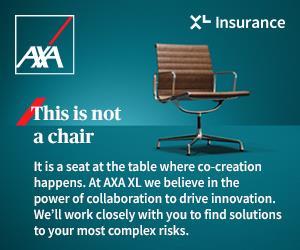Uncertainty is stoking much of the fear surrounding reputational risk and its potential sources
Thursday 24 September 2020
11:30: Main Stage 2: Reputational risk: Why traditional techniques are failing?
Reputational crises are increasingly costing the C-suite their jobs, explained experts during a live seminar at Airmic Fest.
One of the more recent high-profile examples of this was the departure of Rio Tinto’s chief executive Jean-Sebastien Jacques and other two senior executives earlier this month. It followed intense investor pressure after the firm destroyed 46,000-year-old rock shelters at Juukan Gorge in West Australia.
Matthew McEwan, director of risk management at Coca-Cola, said this was an example which illustrated how the “failure to do the right thing can come back to bite you”.
Companies are aware of how quickly, in the current environment, a wrong move can damage the way their brand is perceived by stakeholders. Loss of reputation is in fact the biggest threat to your business continuity, warned Kasper Ulf Nielsen, chief strategy officer and co-founder of RepTrak (formerly The Reputation Institute).
While there is a desire to better measure and manage risks to reputation, its intangible nature has proved a major obstacle. A lack of data surrounding reputation and brand is the source of much of the fear that comes with reputational risk, thought Carol Fox, vice president of Strategic Initiatives at RIMS.
“It’s much better to look at something that is predictive - and how a scenario might play out,” she said. “This relieves some of that fear and bias within c-suites. If you have the data in advance it leads to better informed decisions, which is what we’re trying to do in risk management.”
“It’s about strategy and survival at this time,” she added. “Companies that have taken care of their communities, customers and employees are going to come out of this in a much better place.”
Confidence and data
As detailed in the latest edition of StrategicRISK , Airmic, RIMS and the RepTrak company (formerly the Reputation Institute) have been collaborating to produce a framework to enable companies to get a better handle on the data surrounding their reputation and the threats to it.
Reptrak’s Ulf Nielsen explained why it had been such a challenge to devise a common set of metrics. He identified six key issues which compound the complexity of reputational risk:
- Unclear definition of reputation.
- Confusion on the categorisation of risks to reputation.
- No commonly agreed upon, consistent measurement of the business impact from specific risks to reputation.
- No framework for linking the strategic, operational, and tactical aspects of reputational risk management.
- An absence of integrated ownership and accountability across organisations.
- Slow development of solutions for risk transfer including insurance.
“For the last 15 years we’ve tried to quantify reputation, but how do you break down trust and feelings into something that is tangible?” he asked.
RepTrak has identified seven key drivers or expectations that affect how stakeholders perceive your organisation. By building these together into a framework and assigning scores to each one, companies can begin to build up a picture of their reputation score.
From there it is possible to gauge which risks are likely to have the biggest impact on your reputation and to carry out some scenario analysis/reputation simulation, using the risk register as a starting point.
“When you do that you can see which of the issues [you have identified in your risk register] is going to be most dangerous from a reputation point of view
This approach takes some of the fear out of the equation by giving the executive team the tools it needs to make more informed-decisions when it comes to business growth and protecting the brand, said Ulf Nielsen.
Creating a common language
The COVID-crisis has put corporates under even more pressure to take both a quantitative and qualitative approach to reputational risk management, thought Suzanne Christensen, chief risk officer at Invesco.
The pandemic and economic downturn means that we are “all more challenged”, she said, adding that the stakes have never been higher and an “organisation’s ability to absorb an additional shock is more challenged”.
“Data creates the common language across the risk, it creates a common indexing of risk,” she said. “It brings it into the strategic focus and allows you to think about where you want to allocate your resources.”
In partnership with






















No comments yet